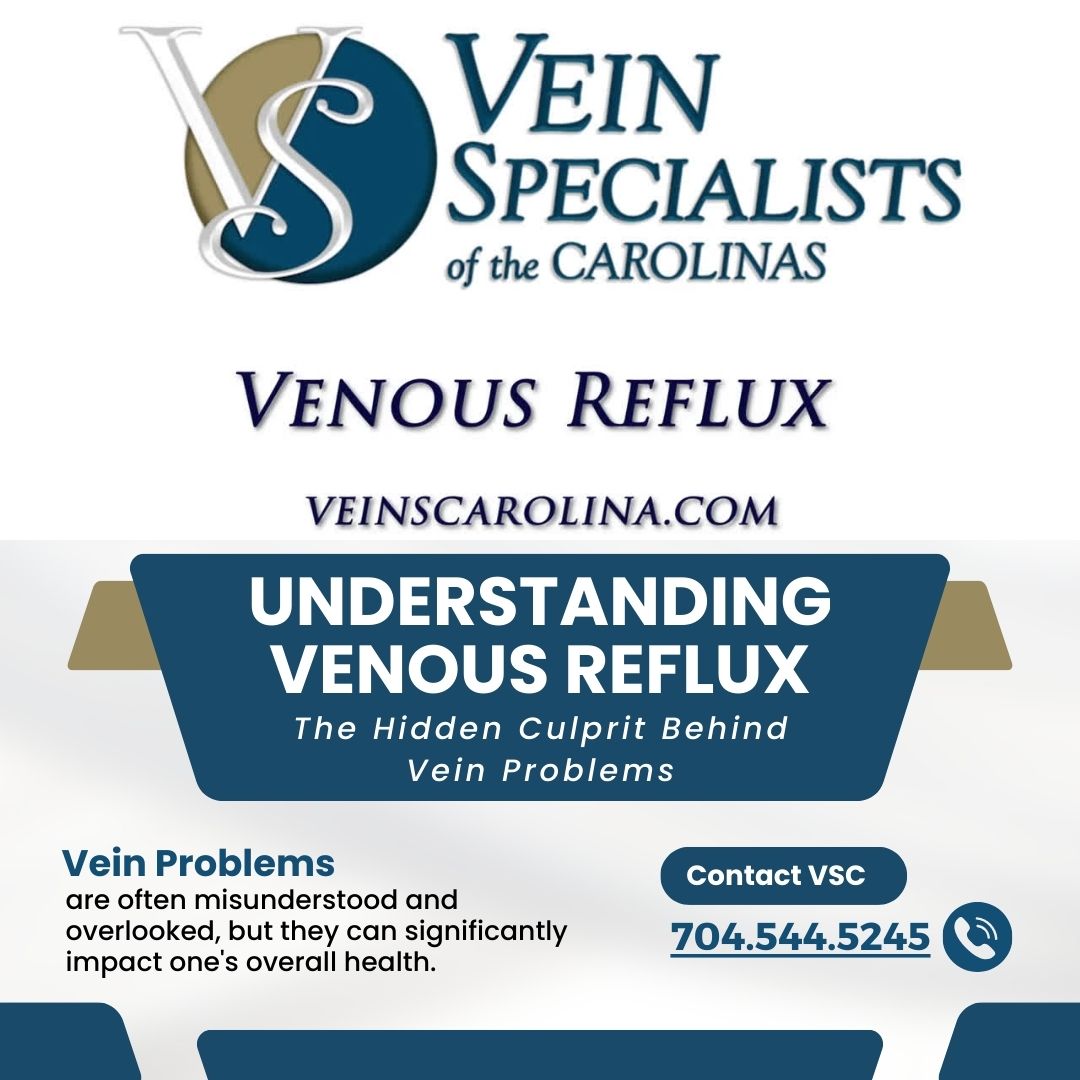Vein problems are often misunderstood and overlooked, but they can significantly impact one’s overall health.
At Vein Specialists of the Carolinas, we believe that proper understanding of the underlying causes is crucial for effective treatment. One of the primary culprits behind various vein issues is Venous Reflux, a condition that leads to Chronic Venous Hypertension (CVH). In simpler terms, it’s like the sewer system backing up in the body, causing increased pressure in the veins and surrounding tissues.
The Underlying Cause: Improper Emptying and CVH The foundation of all vein problems lies in improper emptying, resulting in Chronic Venous Hypertension. This condition is characterized by increased back pressure in the veins, akin to a sewer system experiencing a backup. This heightened pressure not only affects the veins but also impacts the tissues they drain, leading to a range of issues.
Two Disruptors of Drainage: There are two primary ways drainage gets disrupted within the venous system—reflux and blockage. Understanding these mechanisms is essential for grasping the complexity of vein-related problems.
- Reflux: The Most Common Culprit Veins possess one-way valves that enable them to carry blood against the force of gravity, ensuring upward flow without the direct pumping assistance of the heart. When these valves malfunction, a condition known as reflux occurs. In simple terms, it’s akin to a reverse flow in the veins. Instead of blood moving upward, it flows backward, contributing to the development of vein problems.
Reflux is a prevalent issue and can manifest in various forms. The malfunctioning valves allow blood to pool in the veins, causing swelling, discomfort, and potentially leading to more severe conditions if left untreated.
- Blockage: Causes and Consequences Blockage is the second disruptor of proper drainage in the venous system. Two primary causes contribute to blockages:
a. Internal vein blood clots (DVT): Deep Vein Thrombosis, or DVT, occurs when blood clots form within the deep veins. These clots obstruct normal blood flow, leading to increased pressure and potential complications.
b. External compression (May Thurner): External factors can also contribute to blockages. May Thurner syndrome, for instance, involves compression from the outside of the vein, further hindering the normal flow of blood.
Understanding these blockage mechanisms is crucial, as they present distinct challenges in diagnosis and treatment, emphasizing the importance of personalized care.
At Vein Specialists of the Carolinas, our commitment is to provide comprehensive insight into vein problems, such as Venous Reflux, and deliver tailored solutions for each patient. By addressing the root causes of improper drainage, we aim to alleviate symptoms and improve overall vein health.
If you have concerns or symptoms about your vein health – schedule your appointment today!
#VeinHealth #VenousReflux #CVH #ChronicVenousHypertension #DVT #MayThurner #VeinSpecialists

